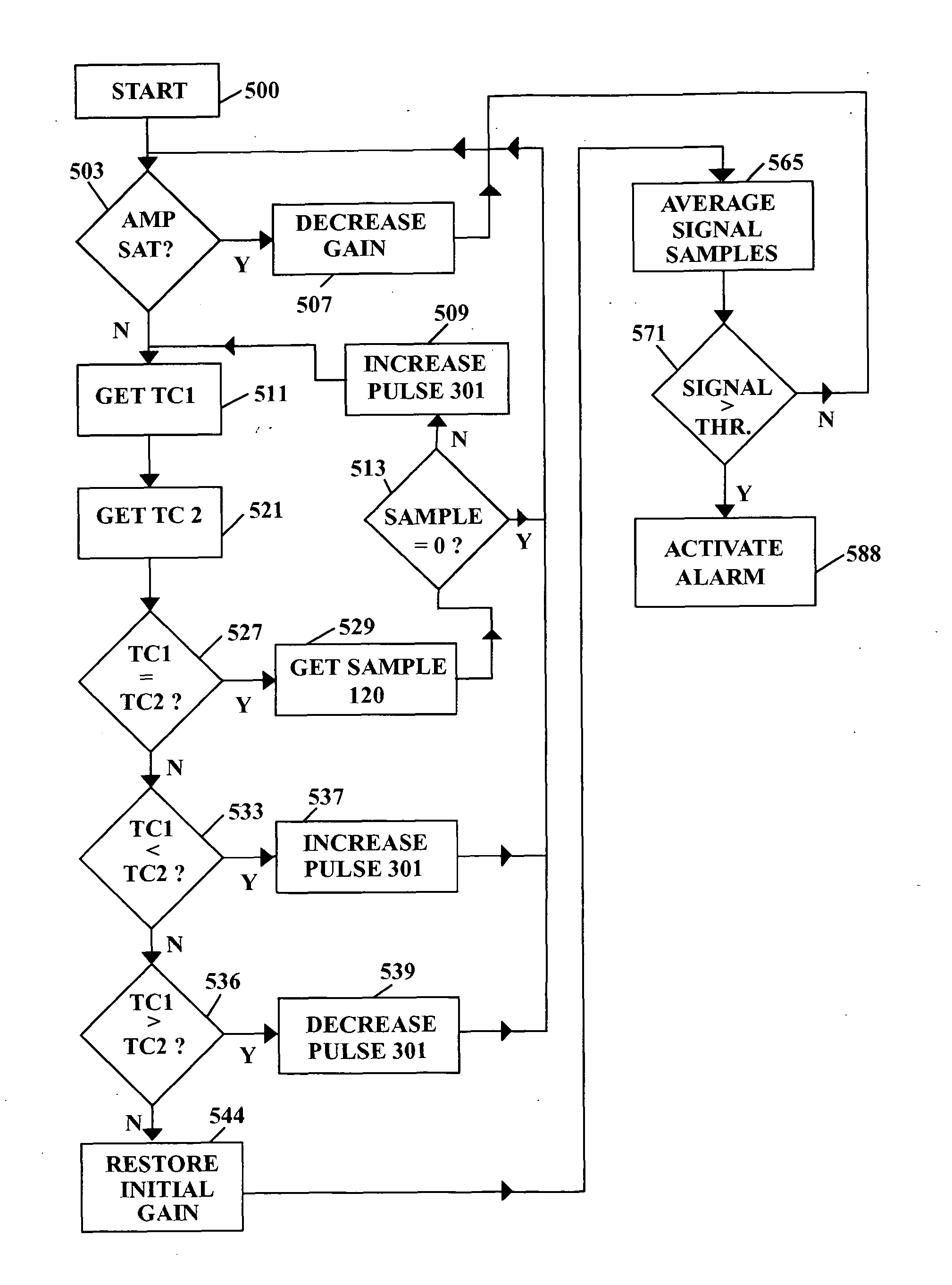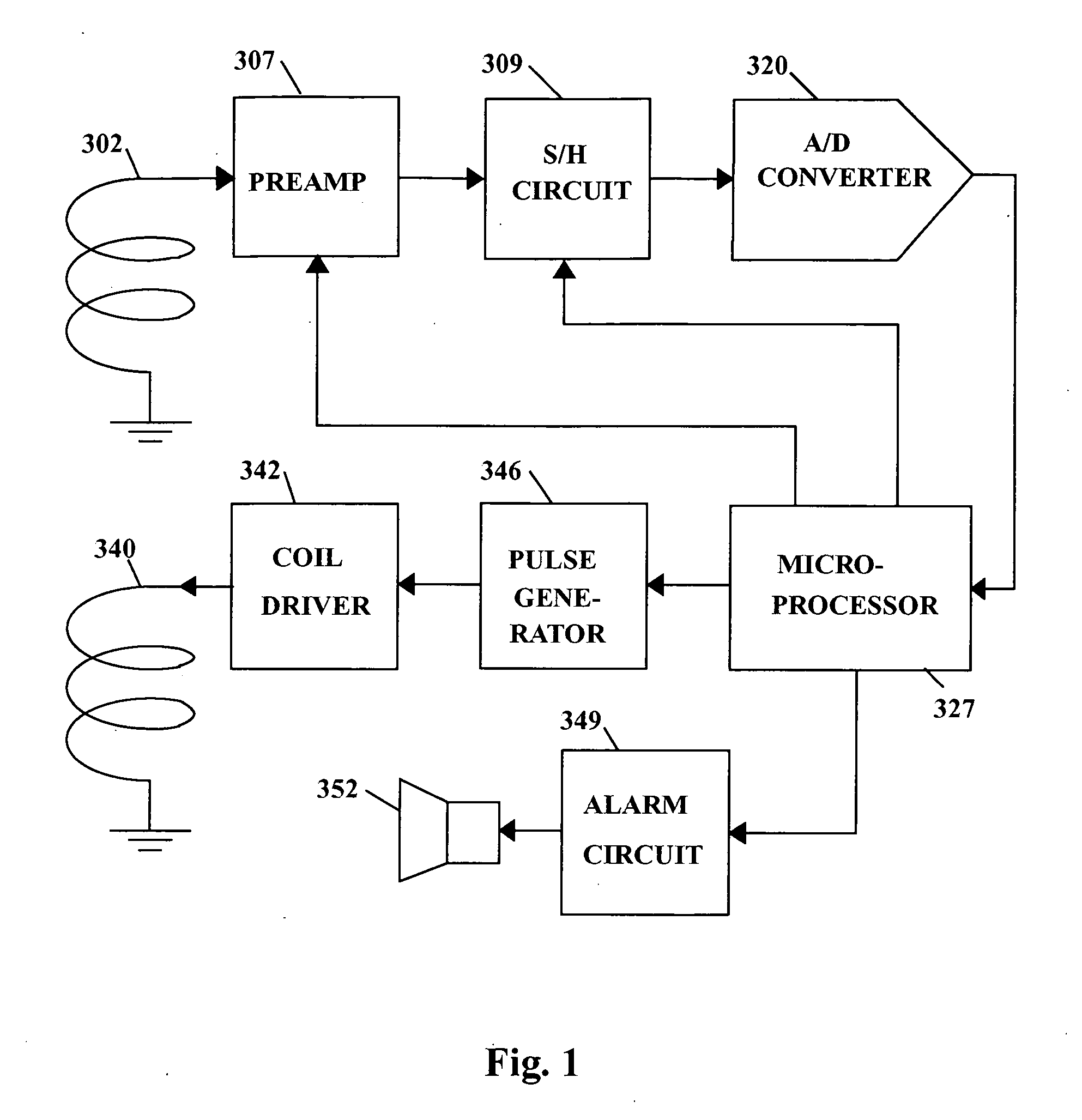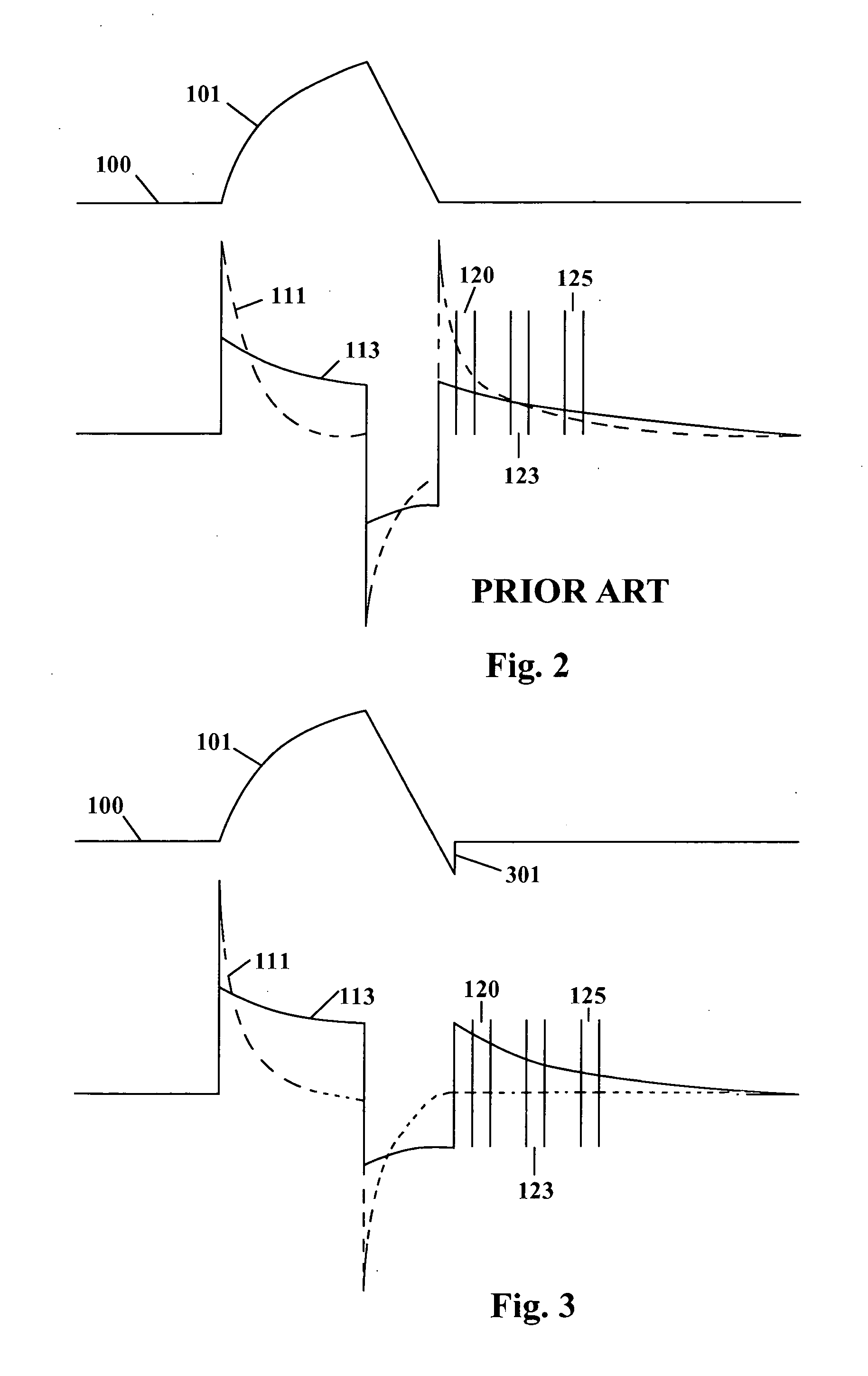Metal detector for use with conductive media
a metal detector and conductive media technology, applied in the field of metal detectors, can solve the problems of not having decayed enough to be insignificant, and achieve the effects of short time constant, high amplification, and high sensitivity to targets
- Summary
- Abstract
- Description
- Claims
- Application Information
AI Technical Summary
Benefits of technology
Problems solved by technology
Method used
Image
Examples
Embodiment Construction
[0015]Microprocessor 327, shown in FIG. 1, delivers a digitally stored waveform to pulse generator 346, which in turn activates coil driver 342 that converts the voltage waveform to a current with a corresponding shape, imposing it on transmitter coil 340.
[0016]The magnetic field emanating from transmitter coil 340 engenders eddy currents in a target and its surrounding medium. The magnetic field generated by said eddy currents induces voltages in receiver coil 302. After the termination of the coil pulse, the eddy currents in the target and the surrounding medium decay toward zero, each according to its own time constant. At any point in time, the voltages captured by receiver coil 302 are summed algebraically, and in the state-of-the-art metal detector they are inextricably intermingled.
[0017]In FIG. 2, trace 111 shows a voltage generated by the background medium and trace 113 shows the voltage generated by a target. The voltage with the shorter time constant is the background sig...
PUM
 Login to View More
Login to View More Abstract
Description
Claims
Application Information
 Login to View More
Login to View More - R&D
- Intellectual Property
- Life Sciences
- Materials
- Tech Scout
- Unparalleled Data Quality
- Higher Quality Content
- 60% Fewer Hallucinations
Browse by: Latest US Patents, China's latest patents, Technical Efficacy Thesaurus, Application Domain, Technology Topic, Popular Technical Reports.
© 2025 PatSnap. All rights reserved.Legal|Privacy policy|Modern Slavery Act Transparency Statement|Sitemap|About US| Contact US: help@patsnap.com



